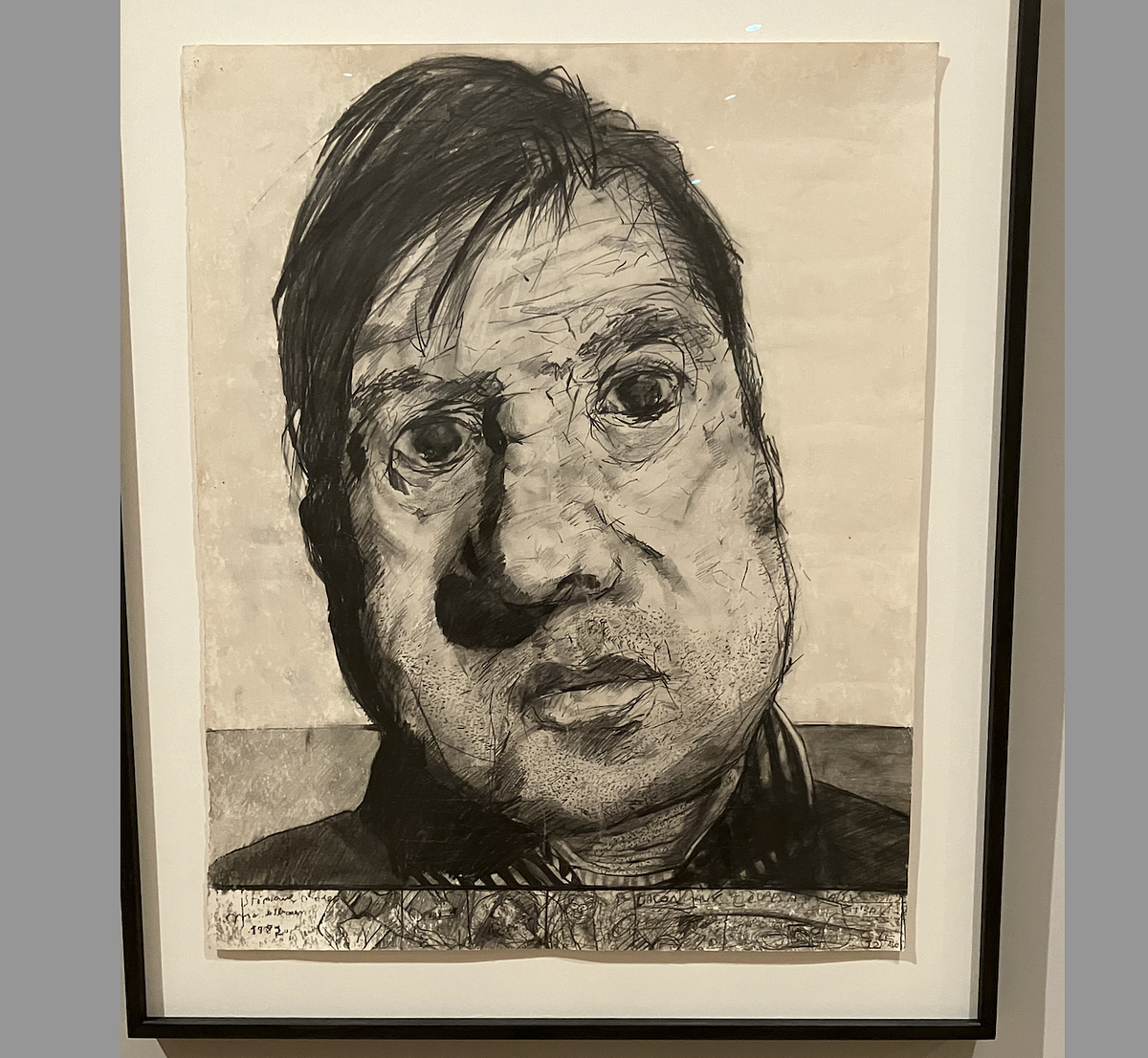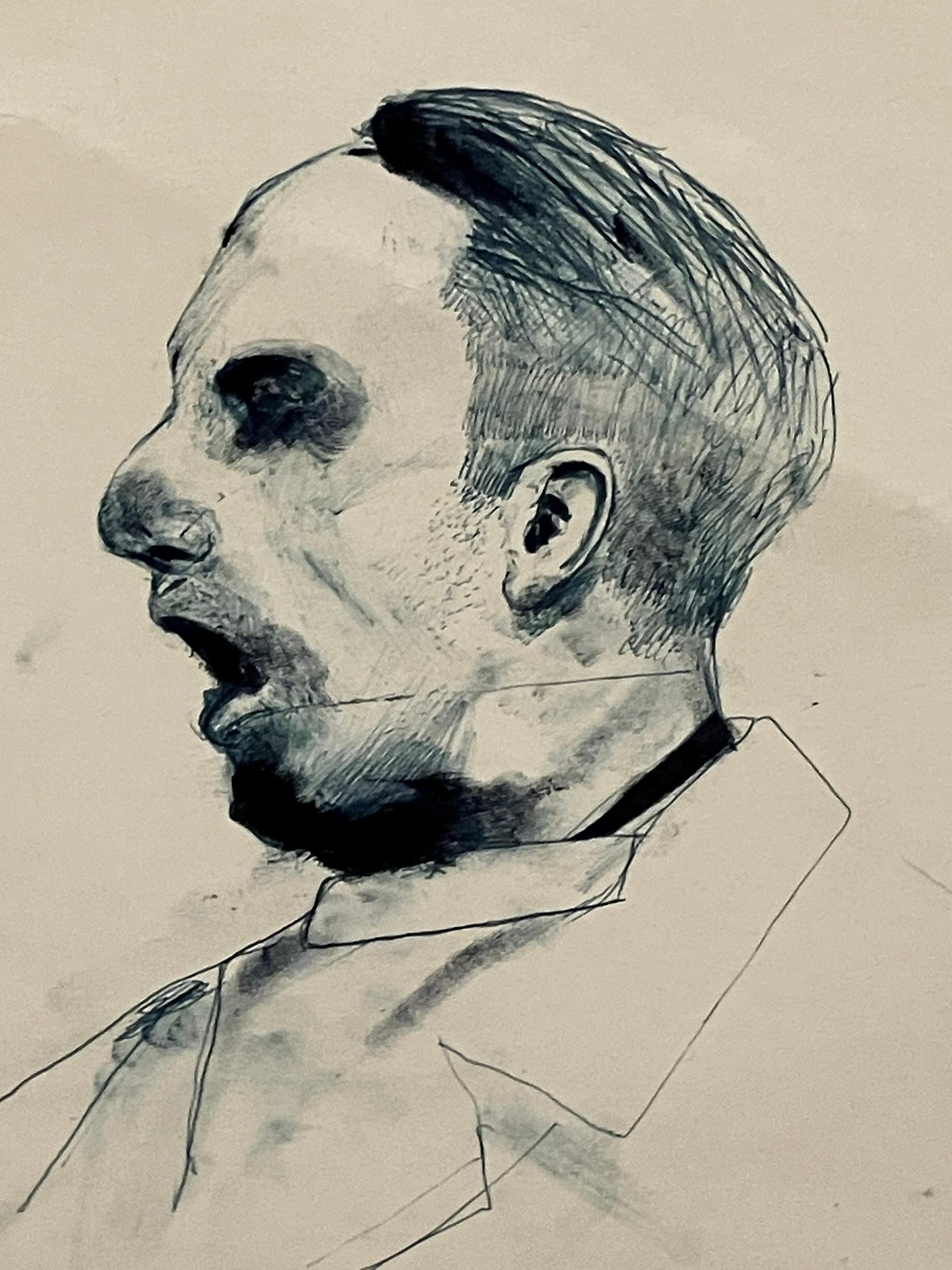Stephane Mandelbaum
The Drawing Center
SoHo, Manhattan NYC
2/16/2024
Neighborhoods in NYC, despite decades of gentrification, massive demographic shifts, and architectural changes, always seem to hold onto whatever legacy the cultural unconscious of the City deems most permanent. This phenomenon is palpable in the now commercial Hell that is Lower Manhattan’s SoHo. You’ve seen the Scorsese movies, you remember the ’70s and ’80s grime — the spirit of the hard-scrabble arts are still given to feebly haunt these cobbled, rectangular blocks. These days, it’s all brands I’ll never be able to afford. But the murals, street vendors, bookstores, and art galleries (which are in general no better than expensive brands, but that’s another article…) all do their best to remind us that something worth happening used to happen here.
One of the galleries, the publicly-funded Drawing Center, is currently hosting an exhibition of an artist who is a tendril of the aforementioned pervasive specter.
Stephane Mandelbaum (1961 – 1986) was a short-lived but towering genius. I’ve seen work like his in the past — but rarely anything so exacting and clear in it’s doing, even in with compositions that tend toward the unbalanced, jumbled, and despairingly spare. Initial chaos gives way to the exacting intentionality of shape and symbol, weight and incompleteness only the highest of estranged modernists are capable of.
Produced in the flourishing creative world of latter mid-century Europe, Mandelbaum’s pen or graphite portraits are often of future artistic heavyweights. I stared at three of his renderings of the famously charismatic and handsome Pier Paolo Pasolini before I realized who it was. I’ve seen pictures of Pasolini ever since I declared myself an unrepentant film fan early in college, but I wasn’t clued into the drawn figure’s identity by any feature expertly rendered by Mandelbaum. It was instead the vulgar collage of the dead Christ haphazardly glued in the bottom right corner of the piece, an uncircumcised penis pasted over her death-rag covered groin, that brought Paolini to mind.
What’s most striking about Mandelbaum’s work: his rendering of figures that I should recognize (Fassbinder, Rimbaud, Goebbels, Bacon) in such a way that they were unrecognizable in all their famed trait, but deeply humanized by a certain darkness no doubt project by Mandelbaum himself. It is Mandelbaum’s soul that covers over their eyes, blots their cheeks, severs their limbs, and scars the visage near to mangled. A real inversion of the usual cliché regard portrait painting or photography — the fascistically craft-oriented idea that an artist’s job is in some way to ‘capture’ their subjects’ essence.
Two examples in contrast:
His portraits of Goebbels are horrific. Absolutely monstrous smears of blue ink, gaping toothless mouths. Now, of course, one renders Goebbels a monster — he was indeed a fucking monster. But, there’s nothing cheap in Mandelbaum’s horror, nothing exploitative or put on. Further, the inhumanity doesn’t seems sourced in the subject. Mandelbaum renders the architect of holocaust a stand in for the evil of an entire country, culture, continent, and species.
His portraits of Bacon are a perfect foil, a figure obviously admired by Mandelbaum, and by anyone with an ounce aesthetic sensibility. But I don’t believe it’s this admiration that shines in Mandelbaum’s Bacon. It is a kindred spirit. Bacon is imbued with the same exhaustive pitch and void as Mandelbaum. Bacon’s is the only immediately recognizable portrait in the lot.







